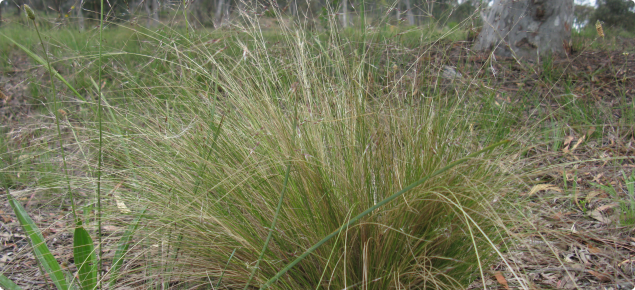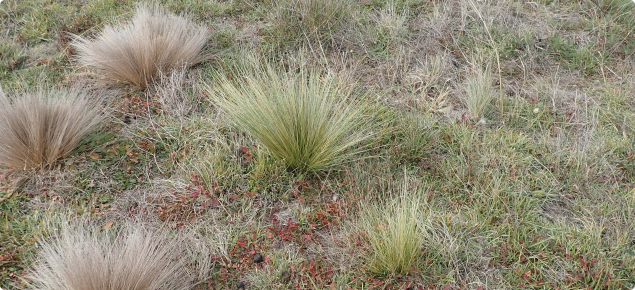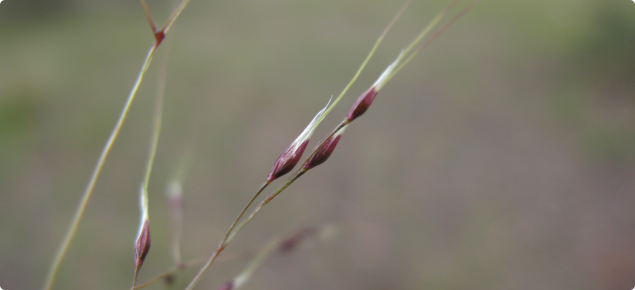Form: grass — perennial
Status: not present in WA
Native to Argentina, Uruguay, Chile, Peru, Bolivia, Paraguay and Brazil. Serrated tussock is a Weed of National Significance (WoNS) in Australia.
Appearance
Serrated tussock is a perennial, tussock forming grass up to 0.6 metres high, with a extensive fibrous root system which exist mostly in the top 20 centimetres of soil, although some do occur deeper. The roots are dense, wiry and fibrous, making serrated tussock very difficult to pull out even when small.
Leaves: Leaves are thin with a diameter of 0.5 millimetres and grow to 50 centimetres long, tightly rolled, with small serrations from tip to base of the leaf.
Flowers: Flowering and seedling heads are a dark purple due to the colour of the two 'glumes' surrounding the seed. Young seedheads held among the leaves; mature seedhead to 25 centimetres long; glumes to 1 centimetre long; hard point at base of lemma bearded. Flowers in spring and early summer.
Seed: Seeds are 1.5–2 millimetres long and are reddish brown or purple in colour. Seeds take eight to ten weeks to mature once the flowering stems emerge.
Agricultural and economic impacts
An environmental weed that can cause serious impacts in native habitats and grasslands. Serrated tussock causes more reductions in carrying-capacity than any other pasture weed in Australia. If forced to eat N. trichotoma, both sheep and cattle may die, due to the rumen becoming blocked by undigested leaves.
Declared pest category
The Western Australian Organism List (WAOL) contains information on the area(s) in which this pest is declared and the control and keeping categories to which it has been assigned in Western Australia (WA). search for serrated tussock in the WAOL. using the scientific name Nassella trichotoma.
Requirements for land owners/occupiers and other persons
Requirements for land owners/occupiers and other persons if this pest is found can be sourced through the declared plant requirements link.
Search > detect > report
| MyPestGuide™ Reporter | Pest and Disease Information Service (PaDIS) |
Control method
Report the presence of this organism before undertaking a control measure. Control methods for this declared plant can be found through the serrated tussock control link.



